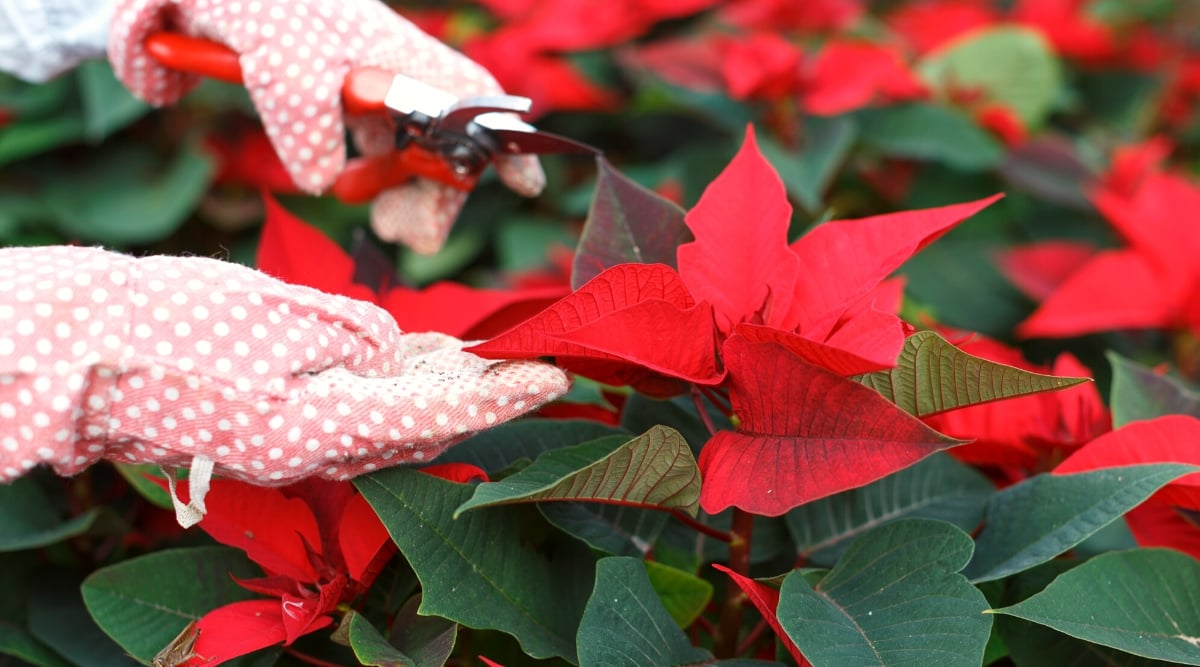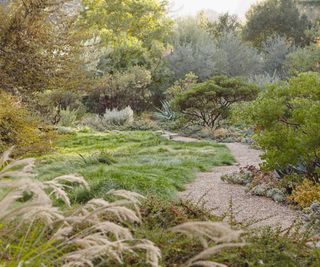In the hearts of gardeners and plant lovers alike, winter brings an assortment of holiday plants that symbolize all the joy and goodwill we feel during this magical time of year.
We trim the tree, deck the halls, hang our mistletoe, force our bulbs, and admire the brilliant poinsettias that show off their nicest colors during these colder months.
Then, as quickly as we were caught up in the whirlwind of celebration and mirth, the season comes to an end. We place the tree by the curb, the paperwhites fade, and the holly boughs begin looking a tad crunchy.
Before you scrap all your holiday greenery, let’s talk about those poinsettias because they might just stick around if you treat them right. Let’s discuss whether you can grow poinsettias year-round.
The Short Answer
Yes, poinsettias can be grown year-round. Whether or not they can be grown outdoors or need to be kept as houseplants depends on your climate zone. They can be planted in the ground in zones 9-11, but in cooler climates, they will need to spend at least part of the year indoors.
The Long Answer
Whether you can keep your poinsettias alive after the season passes depends on a few specific factors. The plant’s handling before purchase, how you care for it after bringing it home, and whether you want to keep it as an indoor or outdoor plant all have roles to play.
How Healthy was Your Plant When You Purchased It?
Choose poinsettias from a reputable source, avoiding exposure to cold or temperature fluctuations.
The first important factor in keeping your poinsettia growing for the foreseeable future is where you acquired it and how it was handled. Most importantly, the plant must have been protected from cold temperatures and extreme temperature changes.
Believe it or not, poinsettias are tropical plants. Despite our associating them with wintertime, they do not have very good cold weather tolerance. Poinsettia plants are native to Central America and thrive in the warm, humid weather typical in that area of the world.
Poinsettias grow in the ground in their natural environment, forming large shrubs up to 15’ tall. These are much larger than even the amazing blink-and-you’ll-miss ‘em Costo giants that make a warm and festive statement on the front porch.
With this tropical nature in mind, it makes sense that they prefer temperatures higher than 50°F. That’s pretty warm in most of the country if you’re looking for a plant in November. Subjecting these plants to cold weather or drastic temperature shifts will damage the foliage and, sometimes, the roots.
For this reason, if you want your poinsettias to last beyond the season, acquiring them from a reputable source is important. Big box stores are a fine place to get poinsettias at a bargain if you only want them for a month or two, but you run the risk that they haven’t always been handled by individuals who know the plant’s specific needs. In addition, they may not be acquiring them from someone who takes special care of the plants they are mass producing.
How Should I Care for My Poinsettia to Keep It Healthy?
 For thriving poinsettias, provide sunlight, prune after bracts fall, fertilize regularly, and maintain humidity.
For thriving poinsettias, provide sunlight, prune after bracts fall, fertilize regularly, and maintain humidity.
If you want to see those colorful bracts return next fall, there are some specific conditions to provide. The bracts are the colorful leaves that form at the ends of branches, which we typically think of as the flowers. The actual flowers of the poinsettia are small and yellow and sit at the very end of the branch on top of the bracts.
These care tips will help you keep your plant beautiful year-round:
As soon as the bracts fall off, it is good practice to prune your poinsettia. Cut stems back by ⅓ to ½ depending on how shrubby you want to keep the plant. The shorter you prune the stems, the shrubbier your plant will grow.
Keep in mind the plant’s tropical nature. Temperatures between 60-85°F are ideal, and they prefer not to undergo large temperature shifts.
Poinsettias can grow quite well inside the home as long as they get enough sunlight.
If you struggle with giving this plant enough light inside the home, you can move it outdoors when the weather warms up in spring and then back indoors in the fall. Transition the plant outdoors when the outdoor temperature is within 10 degrees of the temperature inside the home to make the transition smoother.
Poinsettias truly need a lot of indirect sun to perform their best. They prefer to be just outside of direct sunlight to avoid leaf scorch. Make sure that your plant receives at least six hours of daily sun.
In September or October, it’s time to provide 12-15 hours of darkness per day (this is what turns those bracts beautiful holiday colors!).
Poinsettias like moisture, but they won’t tolerate soggy roots. If you keep your plant indoors, a once-weekly watering should be sufficient. Outdoor plants will need to be watered more often in times of little rain. They also thrive best with a fair amount of humidity.
An ambient humidity level between 50-70% is ideal for most tropical plants, and poinsettias are no exception. While this is a bit higher than most people prefer inside the home, you can increase to humidity around the plant with a pebble tray or humidifier.
Keep in mind the plant’s tropical nature. Poinsettias can grow well inside the home if they get enough sunlight. Temperatures between 60-85°F are ideal, and they prefer not to undergo large temperature shifts.
Should I Keep My Poinsettia Indoors or Outdoors?
 For optimal growth, plant poinsettias outdoors in zones 9-11.
For optimal growth, plant poinsettias outdoors in zones 9-11.
In zones 9-11, you can plant your poinsettia outdoors! In zone 8, you may be able to keep them alive through the winter with some extra care. A thick layer of mulch in the winter will help to protect the roots.
These plants grow between 10’ to 15’ tall and take the shape of a large shrub when given the space and the right environment. Outdoors, the plants gain exposure to the natural forces that encourage blooming, so you have much less work to do.
Cool Climate Care
You should grow your plant indoors if you live in a cooler climate. To bloom and produce colorful bracts, poinsettias need a temperature shift and a decrease in daylight hours.
Creating the right combination of light and temperature shifts for an indoor poinsettia requires some planning and intention. A combination of indoors in winter and outdoors in summer is ideal for cool climates.
When you move your plant outdoors in the spring, wait until the outside temperature is consistently close to your home’s interior, with no extreme changes from day to night. This will feel most natural to your plant and help prevent shock.
In the fall, do things a bit differently. If you wait until the external temperature is the same as your indoor climate, your plant won’t experience the cooling weather that triggers blooming. Bring your plant indoors a little early when it is still warmer outdoors than in. This will create a perceptible shift in temperature.
Daylight hours are the second factor in making a poinsettia bloom. This plant needs 12-15 hours of darkness to initiate a bract color change. If the plant is getting plenty of sun outdoors, moving it indoors will create a perceptible decrease in sun, and your plant is more likely to bloom.
If you live in zones 7 or 8, you can probably leave your poinsettia outdoors until the bracts naturally begin to change colors. However, be careful not to leave them out in a freeze. This can cause foliage death and a sad-looking plant.
Final Thoughts
Unless you live in a tropical climate, poinsettias fall into the moderate range where maintenance and care are concerned. It takes effort and foresight to keep these plants happy in cooler climates, but not so much that you should be discouraged from trying. Like other tropical plants, poinsettias can make good houseplants under the right conditions.




